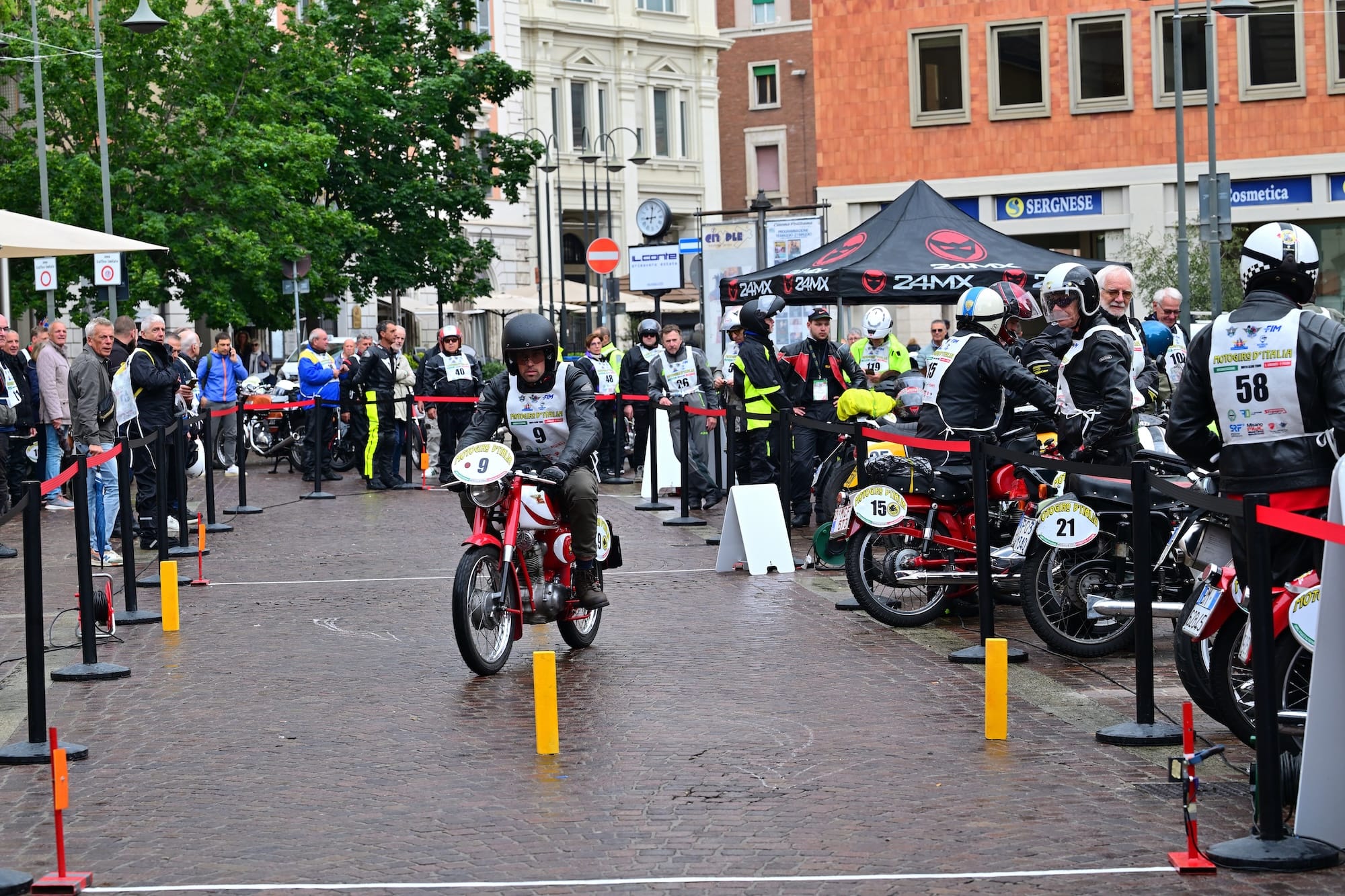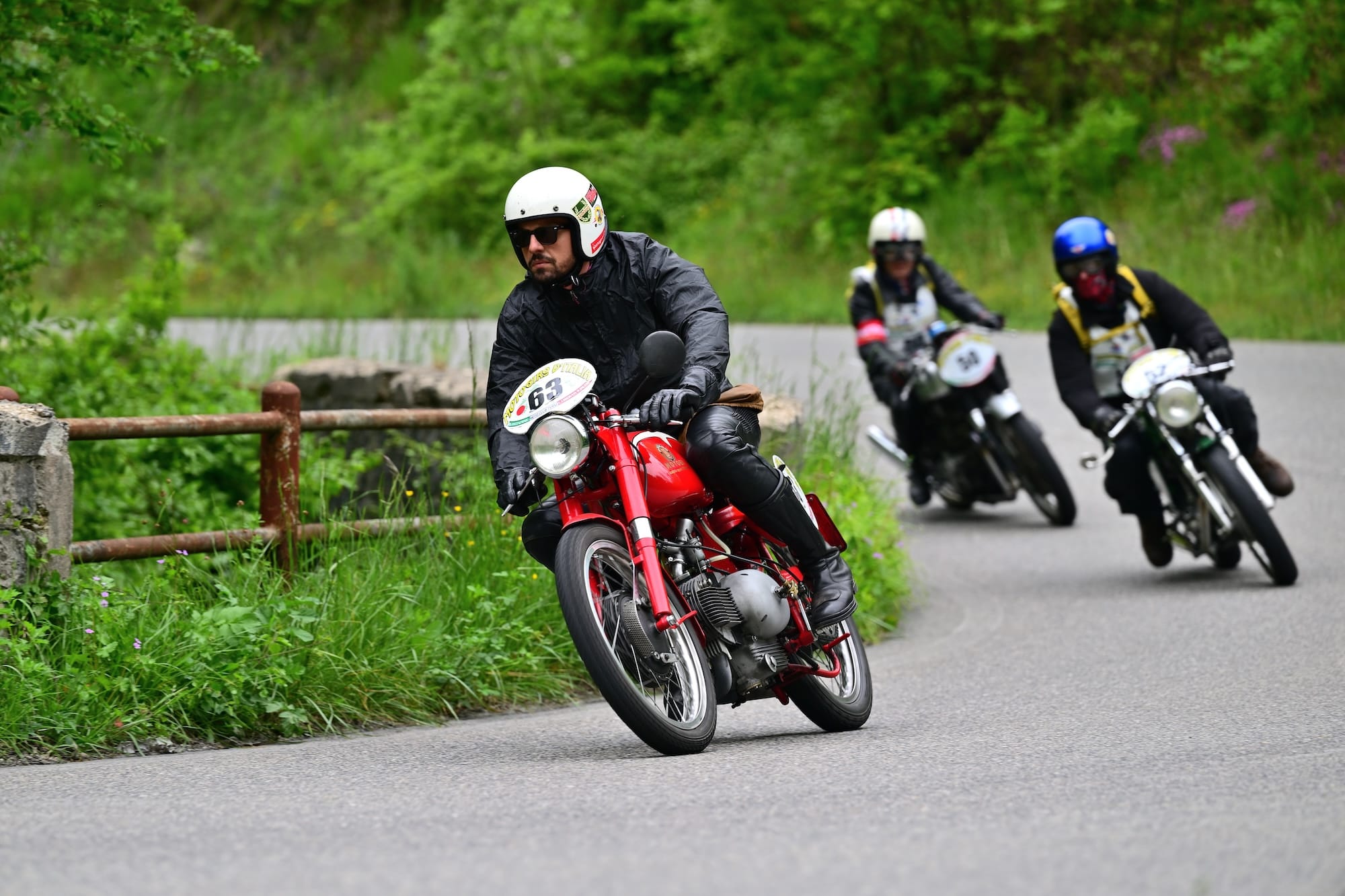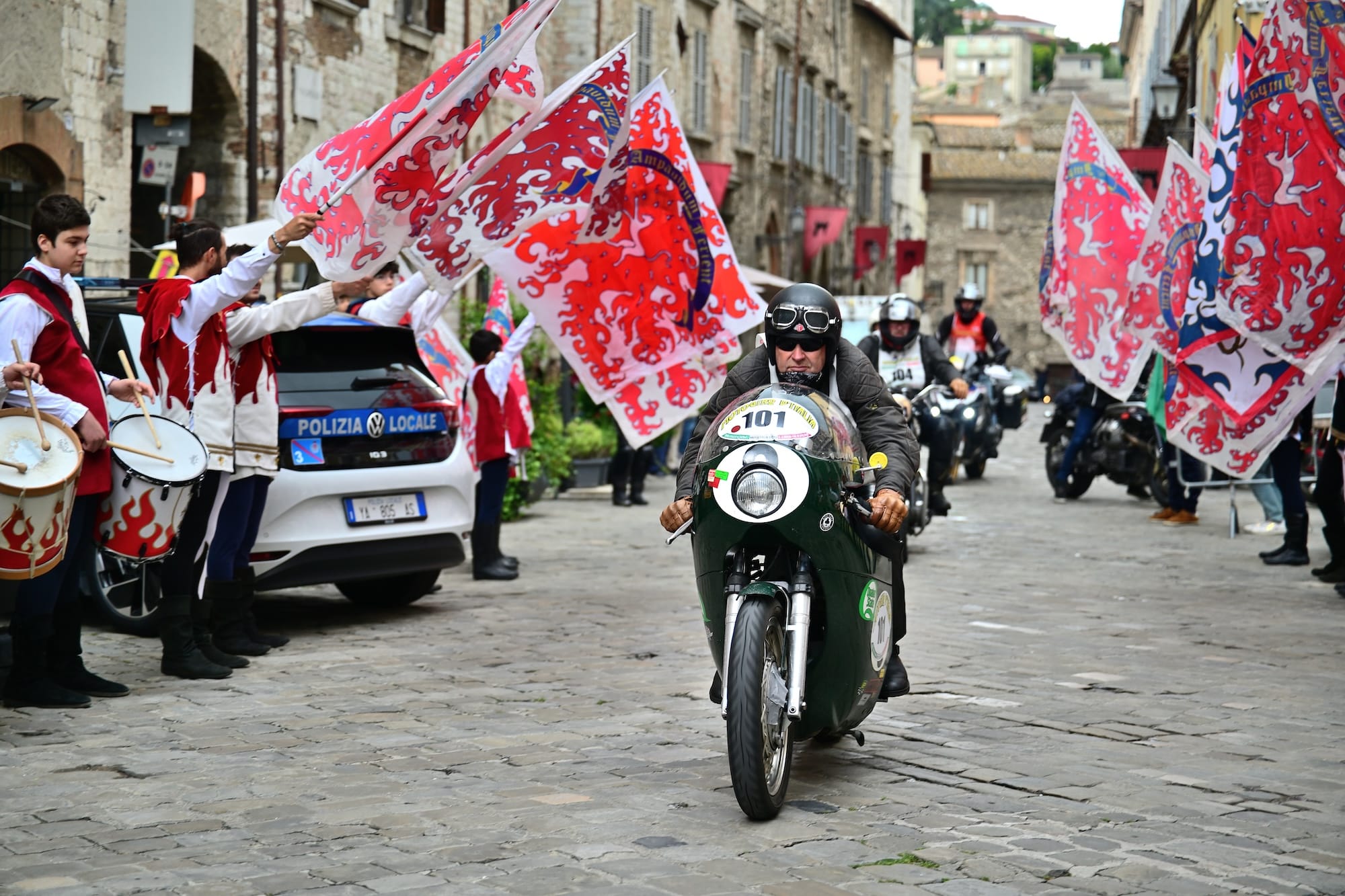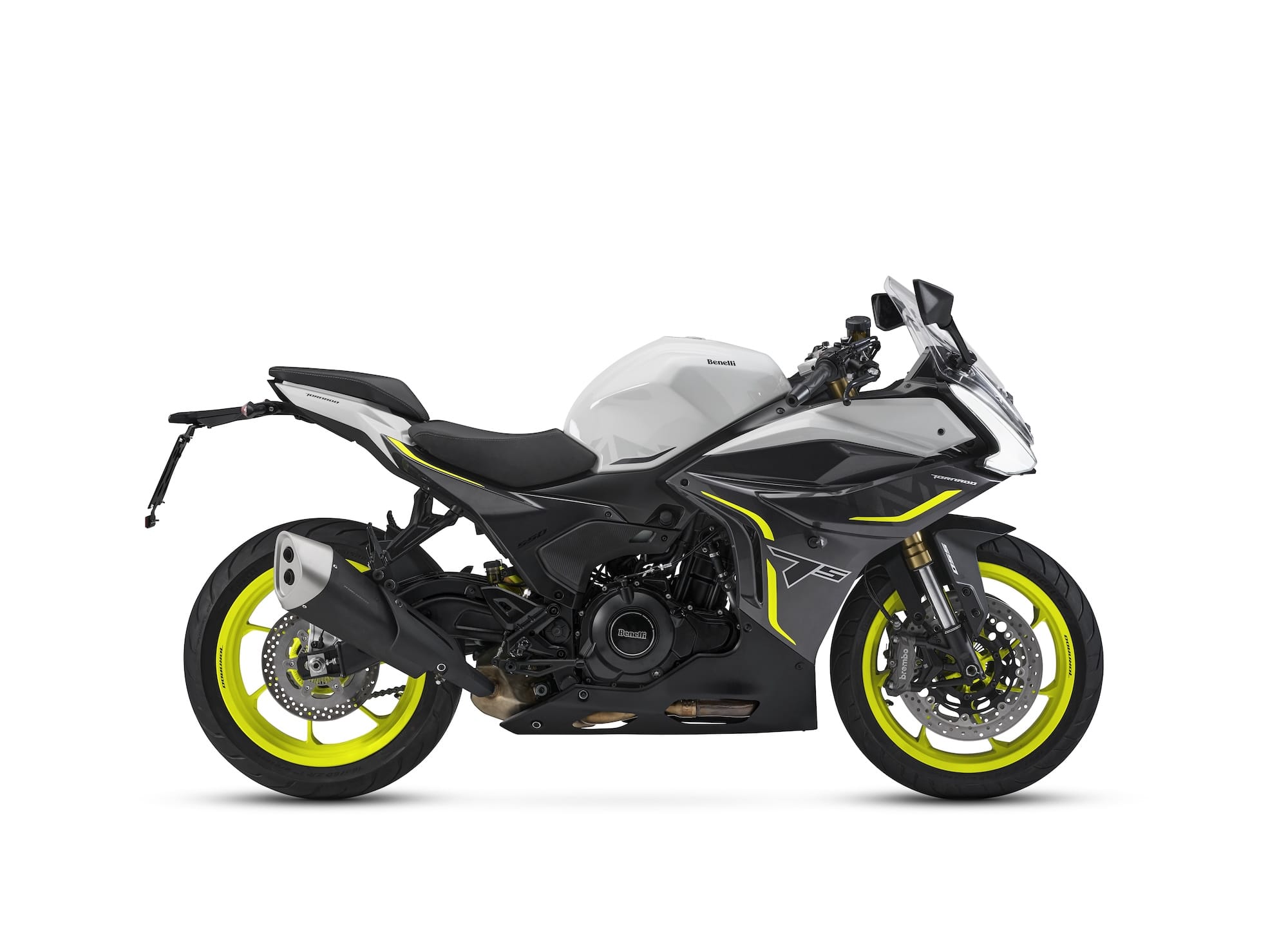MotoGiro d’Italia 2025— Old Iron in the Old Country

The ancient stone walls of the tiny village of Monte Cerignone in the Italian province of Pesaro and Urbino reverberate with the sound of 200 motorcycles. Townspeople come out to take in this mad parade. Children have been let out of school to see the spectacle. The racers are men and women, young and old (but mostly old). They race into the cobblestoned town square with identities hidden behind goggles and scarves, clad in shopworn leather suits, bringing with them exhaust and engine noise.
It’s not as reckless as it sounds. After all, how much trouble can you get into with old 175cc iron? This is MotoGiro d’Italia 2025, and the participating motorcycles are decades old. Yet, they still belt out their imperious war cries charmingly, let loose once again to carry out their wonderful purpose.
The MotoGiro is a historical reenactment of the oldest and most prestigious Italian motorcycle stage race, with roots back in the days before World War I. Born in 1914, the Giro grew in fame, becoming an Italian legend. Sadly, it came to an end in 1957 following a horrific incident at the Mille Miglia, the Giro’s auto version, where a driver, co-driver, and nine spectators were killed. The accident led to a road race ban in Italy.

The Giro was resurrected in 1967 and 1968; in 1969, it was reborn as a timed rally. Relaunched in 1989, the Giro attracted plenty of participants, proving its enduring popularity. After another hiatus, the Giro returned in 2001 and has since taken place annually, giving aficionados of vintage motorcycles an opportunity to relive the glory of these motorcycles’ storied pasts.
The Protagonists
There are enough classes to accommodate most two-wheelers, from scooters to singles to multi-cylinder machines to tourist class. Most of the contestants hail from Italy, but England, Canada, France, the U.S., Argentina, and others proudly fly their flags. All the participants may not share a language, but they share a passion, each with a story about why they ride what they do. Perhaps it’s a machine from their youth or a bike lusted after but only acquired in recent years. It takes all kinds.
Each of the six mornings that comprise the Giro start with the sound of this happy cadre of vintage machines coming to life. There are more kickstarters in one place than you’re likely to encounter anywhere else. I always feel a nostalgic gratification when hearing a cold engine cough to life after several kicks. The bikes then line up according to the participant’s number and are sent off on the day’s adventure.

The rules of this timed rally are simple. You must clock through at your appointed time or risk demerits. The days average about 167 miles of riding. If you arrive early to one of the checkpoints (usually five or six per day), you have to wait for your prescribed time to pass through.
A series of challenge tests breaks up the riding. Simple in layout, they become difficult due to timing. Riders must cover a short section of pylons and a straight unobstructed section as close to the exact same time as possible. Some riders are very serious, with triple clamp-mounted stopwatches calculating their points. Most, though, are here to have a good time. If they receive an award for the day, it simply adds to the fun.
Between checkpoints, water and food stops (plenty of pizza and local treats), and the special tests, there is a lot of glorious riding. The Italian hills are an appropriate backdrop for this escape into the past. All day long, there’s a moving showcase of beautiful two-wheeled pedigree, each with their own distinct sound. Benelli, Moto Guzzi, Motobi, MV Agusta, Ducati… The majority of these vintage machines have small displacements, so momentum is key. The riders rarely back off the throttle and carefully plan each shift in fear of losing forward movement, resulting in a surprisingly swift pace.

The days are long but not draining; the nightly dinners and award presentations that in true Italian style go late into the night with plenty of libations are more fatiguing. Regardless, the participants emerged each morning with bright dispositions and cheery smiles. With the event’s traditional May scheduling, the weather offers the best possible riding, with mild temperatures and relatively little precipitation.
The Pink Arrows
Despite the number of participants, I often found myself riding alone for long stretches. These private meditations were broken by the occasional overtaking. The route is well-marked with highly visible pink arrows. People still get lost, but that’s to be expected. Participants joke about “pink arrow anxiety,” the feeling of riding by yourself and, not seeing anyone else, wondering if you missed a marker. Fortunately, there are worse fates than to be lost in Italy on a motorcycle. A sweep team collects up the stragglers or those who have suffered a breakdown (you see roadside repairs and rebuilds along the route). In the end, it all gets figured out.
Besides the fantastic riding, motorcycles, and food, the thing that moved me the most was how, in each village we stopped, old men leaning on canes would wander among the bikes. They would linger around one machine in particular in admiring contemplation, a gleam in their eye. I could only imagine memories of their own youth and the adventures found on those very mounts were stirring in their minds. Despite telling them I didn’t speak the language, they would talk to me in Italian. What could I do but listen politely to what I assume was a wonderful story from their past?

Logistics
The entire MotoGiro operation is expertly coordinated and seamlessly executed as it moves to a different hotel every other day. The navigation out of town each morning becomes a presidential motorcade, controlled by Carabinieri leapfrogging ahead to block traffic. And that wonderful noise. For six incredible days, in sleepy villages across the Pesaro and Urbino province, locals gathered on corners and at cafes to watch us pass, always eager with a wave.
When it’s all over, talk turns to where the Giro might go next year. All we know is that it’ll be in Italy on exceptional roads through stunning scenery. For now, the participants will return to their homes and catch up on sleep.
The MotoGiro immerses you in Italian culture, allowing you to savor the country’s beauty, the delicious food, and the inviting roads. If you want to escape for a week and turn back time in the company of like-minded riders, seriously consider attending the next Giro—especially as there’s no guarantee of how long this rather nutty event will be allowed to continue.

2025 Benelli Tornado 550
Benelli is fortifying its 2025 stable with its flagship Tornado, the bike that earned the Italian marque kudos in the ‘70s as a 650 twin. That bike evolved into the striking 1130 triple-powered superbike of the early 2000s. Fully-faired with sculpted, wedged lines, the new Tornado is intended as an everyday supersport mount.
The Tornado 550 is fitted with a liquid-cooled DOHC 554cc parallel-twin (four valves per cylinder), producing 56 ponies at 8,250 rpm. The engine is cradled in a steel tube trellis chassis supported by an adjustable 41mm Marzocchi fork (4.3 inches travel) and rear mono-shock (4.9 inches travel) mated to a double wishbone swingarm. Braking components are from Brembo, with dual 260mm discs on the front grabbed by four-piston calipers, and a single 260mm unit on the rear. A six-speed gearbox, traction control, and two ride modes (normal and sport) round out the powertrain. Dry weight is a claimed 463 pounds.
Creature comforts include a five-inch TFT color dash with Wi-Fi, Bluetooth, and USB-C connectivity for full navigation. A tire pressure monitoring system tracks tire pressure and temperature of the Pirelli rubber (mounted on 17-inch alloy wheels) for peace of mind. The front of the Tornado’s fairing—separate from the headlight—illuminates as the fangs of a lion, the historic symbol of Benelli. It all adds up to the aesthetics of the new Tornado. MSRP was not available at press time.
